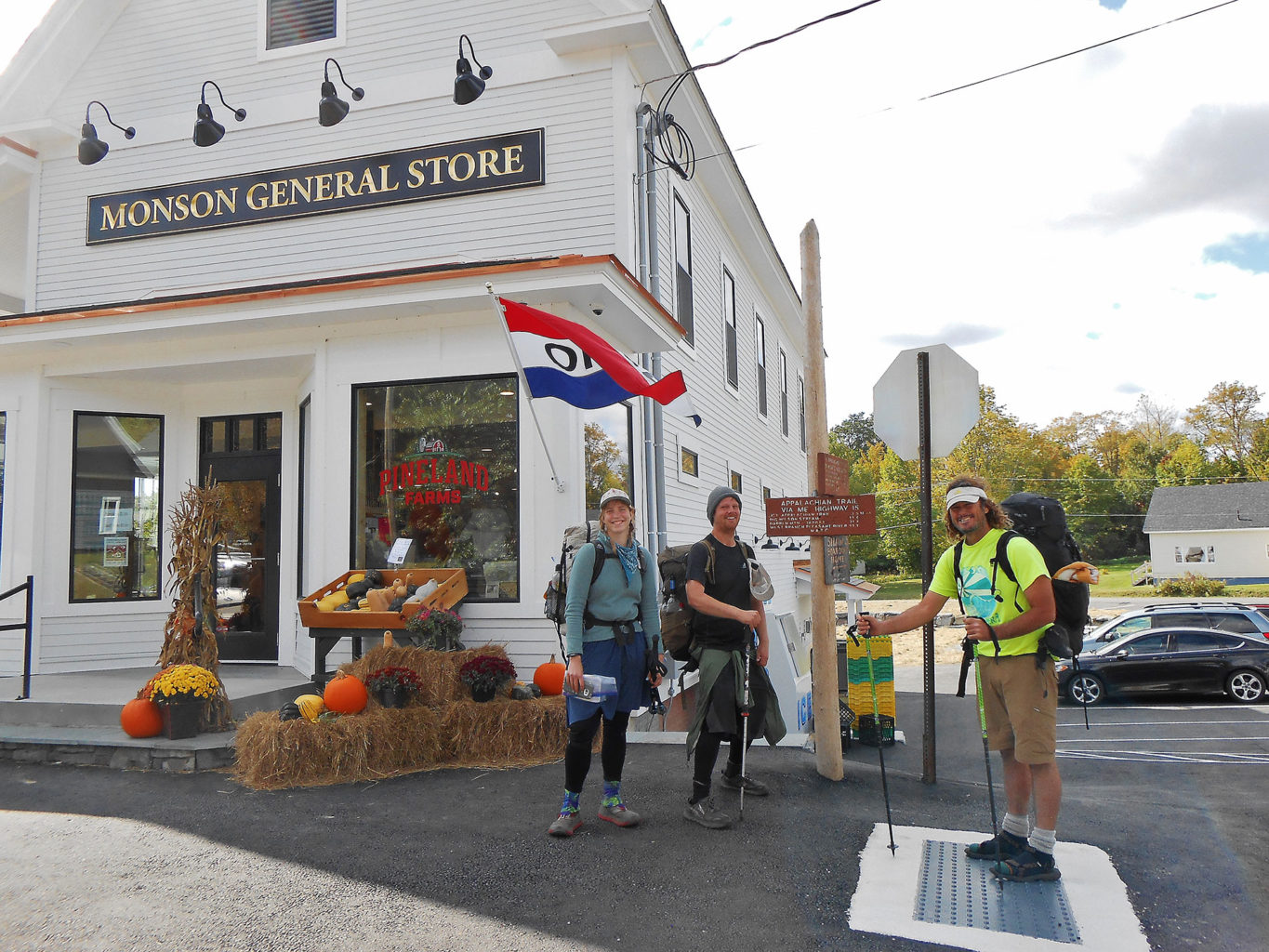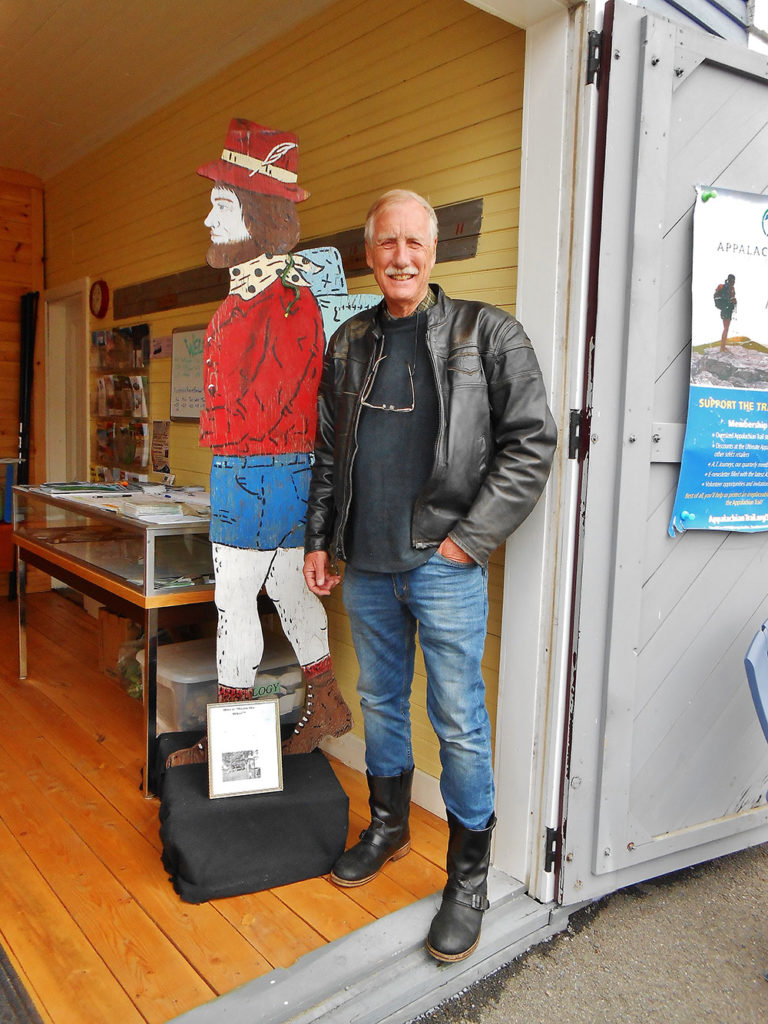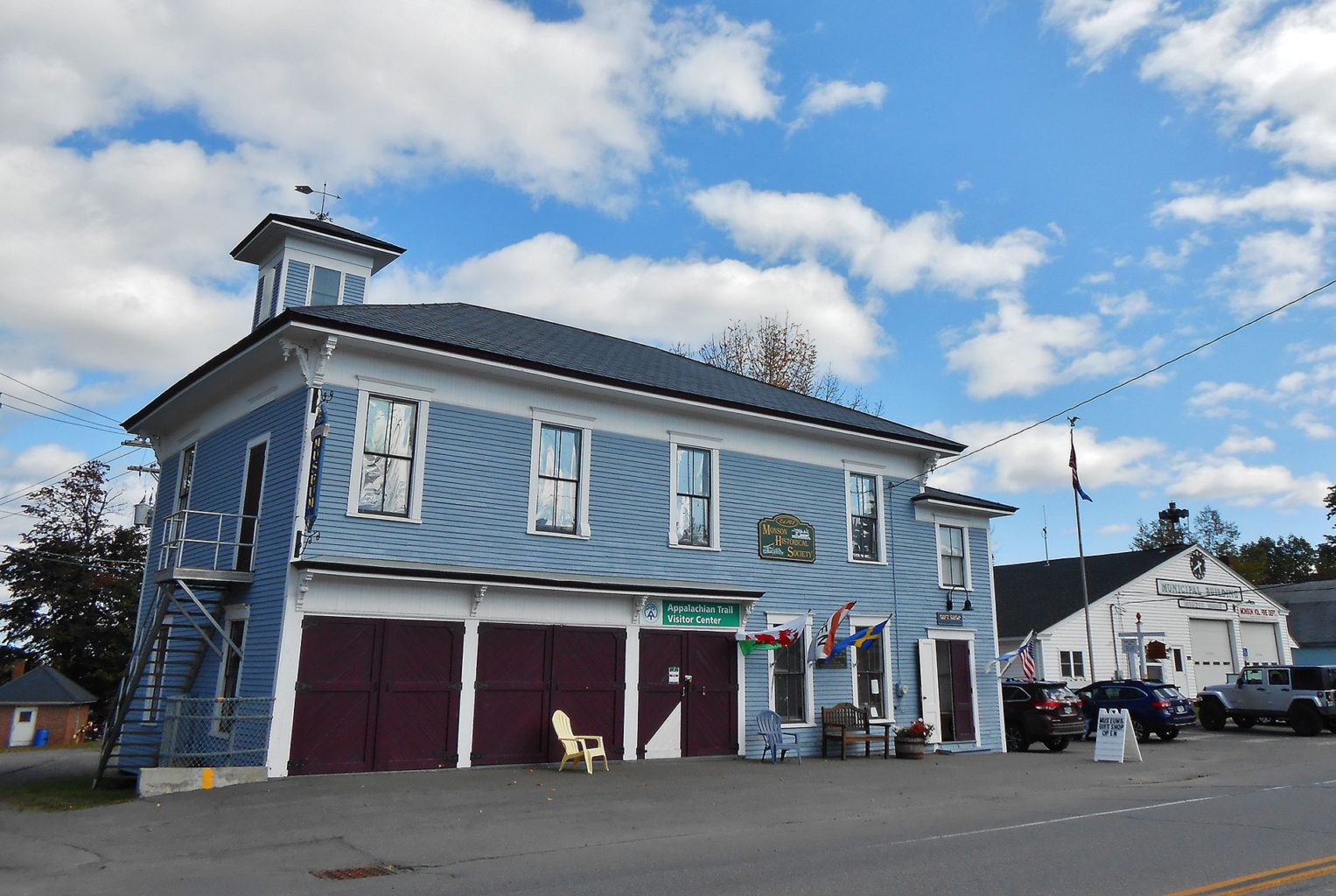On June 7, 2017, the Appalachian Trail Conservancy opened the doors of the Monson A.T. Visitor Center at its new location in the Monson Historical Society building on Main Street. Since then, we’ve been open seven days a week, and we’ve welcomed over four thousand visitors. Our final day of the season was October 15.
The Appalachian Trail is America’s longest, skinniest national park. It is managed cooperatively by the National Park Service, the Appalachian Trail Conservancy, and 31 volunteer Trail-maintaining clubs. Most of Maine’s 281.8 miles of Trail are maintained by volunteers with the Maine Appalachian Trail Club. The Appalachian Mountain Club maintains the 14.6 miles of Trail from Grafton Notch to the New Hampshire border.
The Appalachian Trail Conservancy is a nonprofit whose vision is “to connect the human spirit with nature—preserving the delicate majesty of the Trail as a haven for all to enjoy.” The Monson A.T. Visitor Center provides practical guidance to long-distance and day hikers in support of that vision. We offer maps of the A.T. and other local trails. We assist hikers with planning and preparation and help connect them with needed services. A major goal of the center is to educate northbound thru and section hikers about the exceptional natural values of Baxter State Park, and to help them understand the regulations that keep the park as Governor Baxter envisioned it, “forever wild.”

Appalachian Trail hikers at the Monson General Store. The brown signs with white lettering on the pole behind the hikers list distances to various points north and south along the A.T. Photo by Wendy Weiger
Each day at the center brings a new crop of visitors, each with a unique story of the journey that brought them to Monson. For many, a long-distance hike on the A.T. is a transformative, life-changing experience. In July, we welcomed Dale Sanders (trail name: Grey Beard), who—at the age of 82—is setting the record for the oldest person to complete a thru-hike of the A.T. His determination, vitality, and love of adventure were truly inspiring. In August, we were honored by a visit from Senator Angus King, who rode into town on his motorcycle.

Senator Angus King takes a moment to pose with Hiram the Hiker at the Monson A.T. Visitor Center. Hiram stood sentinel at Shaw’s Hiker Hostel during the 1970s and 1980s. Hiram is a symbol of the vital role the Appalachian Trail has played in the culture and identity of the Town of Monson. Photo by Wendy Weiger
In addition to the support we offer hikers, the Visitor Center also serves as a hub for information about many other local activities, from boating to wildlife watching to the arts. This year, we began offering events that provide a deeper understanding of the nature, culture, and history of the Hundred Mile Wilderness and Moosehead regions. The first event was a nature walk along the A.T. north of Monson, looking at flowers and trees, listening to birds, and absorbing the beauty of our local woods and waters. At other events, participants learned about little-known local hiking trails, the mysteries of mammal tracking, the planning of the A.T.’s route through Maine, and conservation initiatives that will protect the North Woods for future generations. One of our final events was an open house where local artists displayed their creations, many of them inspired by nature.
From the earliest days of the A.T., the town of Monson has enjoyed a special relationship with the Trail. Monson serves as the gateway to the Hundred Mile Wilderness: the town offers northbound hikers their final opportunity for resupply, southbound hikers a chance to rest and regroup before continuing their trek, and a jumping off point for many backpackers and day hikers for short or long-term adventures. Monson was officially designated as an Appalachian Trail Community in 2012.
The Monson Historical Society building—where the A.T. Visitor Center is located—dates to 1889 and has served many functions over the years. It has housed the local fire department, the grange, the town office, and even a jail. The Visitor Center is in a room that was recently used to store an antique snow roller. The Historical Society has generously loaned the Visitor Center a well-worn knapsack that was carried in 1933 on the first marking of the A.T. from Katahdin to Long Pond.

The Monson Historical Society building houses the Monson A.T. Visitor Center. Photo by Wendy Weiger
We invite everyone interested in Monson, the Moosehead region, the Hundred Mile Wilderness, and/or the A.T. to visit us next season! In the meantime, please check out our Facebook page (Monson Appalachian Trail Visitor Center) for Trail and regional updates.
—guest post by NRCM member Wendy Weiger










Leave a Reply